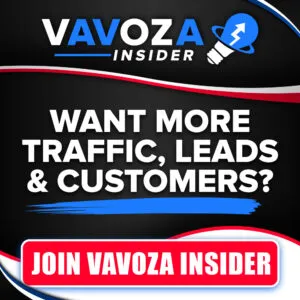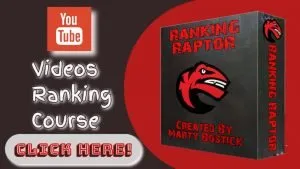Before we get down to business, we should explain what we were trying to achieve when we fired our agencies, brought digital marketing and user journey management in-house and undid all of their (expensive) work. Our business has two sides. Wholesale and retail. We make products then sell them, both to shops and individual customers. Our website handles them both, but is designed to divert wholesale customers to their own dedicated subdomain.
Got that? Here’s the thing… our agencies didn’t. They were obsessed with “user journey” but couldn’t accept that our website had two conversion criteria. First, the typical e-commerce conversion funnel: a user lands on the site, heads to a product page, adds to the cart, heads to the checkout and buys a product. That’s conversion number one.
Conversion number two is a bit more complicated and is reserved for potential wholesale clients. In this case, they land on the site; head to a product page, decide they want to stock that product, click the wholesale button and go to one of our wholesale landing pages. Here, they fill in a form which is then processed in-house manually. Old-school or what?
Our agencies were great but they just couldn’t get their heads around the fact that we had two potential user journeys. So we parted ways and got a bit geeky.
Stage 1: Google Analytics User Flow
The User Flow tool in Google Analytics can be both very helpful and entirely useless. We were only interested in people who didn’t convert against either of our criteria. After a lot of time spent reading forums and support articles until we figured how to single these people out, we managed to isolate things a bit.
What we spotted was that the average non-converter dropped off after three interactions. Unsurprisingly, the average converter completes give interactions before they place an order. Doesn’t take a data scientist to hypothesize about that. But what was interesting was why people dropped of.
Allowing a percentage who just didn’t want to buy or stock our products, we spotted that the third page (second click) a non-converter saw was very rarely the same as a converter. Non-converters were landing on our product pages TOO QUICKLY. They were seeing our products before they’d bought into our business.
Our products are not cheap. They’re not expensive either – the average one is £25 at retail. But to spend that on a beard grooming kit or selection of bath oils, you need to really love the fact that they’re handmade, fully natural, cruelty free etc. Once you realise that this is an aspirational product, you’re suddenly more likely to buy. Or not. That’s fine. By following the traditional ethos of pushing people onto a product page with a big CTA button and lots of pretty pictures, we were ignoring the fact that high-end customers buy into a lifestyle, not a product.
Clearly, we didn’t grasp all that from five minutes on the User Flow page of Google Analytics. It took a bit of time and tinkering with filters to create specific segments. But it was time well spent.
Step 2: What Is The Perfect User Journey?
You’re just going to have to believe me here. There is no such thing as the perfect user journey. Your consultant will tell you otherwise but – honestly – they’re wrong on this one. Every user looks for slightly different things. Let’s use an example you’re familiar with.
Moz. Formerly SEO Moz. It’s a great bit of software. If you sat down and wrote the perfect user journey resulting in a subscription for them, it might look something like this:
Lands on landing page promoting their Keyword Explorer → Hits a CTA, enters email address → is shown a presentation about how the Rank Tracker and Keyword Explorer allows them to find new keywords and track their success on existing targets → Conterts, subscribes.
That’s great Rand Fishkin is delighted. His company has a new subscriber. But that user flow only works for a certain segment of visitors. Take me… I don’t really care that much whether I rank 8 or 9 for a secondary keyword. I care about the traffic that lands on the site and track this with the Landing Pages tab of Google Analytics. What I care about (and the reason I have a Moz subscription) is that it creates pretty graphs of our successes. I show these graphs to our MD who smiles.
Moz couldn’t possibly know what my key considerations are. I certainly didn’t Google “SEO tools to make my boss smile” and land on a specific landing page for that query. I googled “Good SEO tools”, found them and joined.
I only use the Moz example because you’ve heard of them. They’re a great company and I wouldn’t dream of telling them what to do.
So back to the question. What is the perfect user journey? Well, it’s this:
A user that lands on the website and sees content relevant to their personal need.
We can’t predict what that is. OK, we make and sell gifts, so they probably want to buy someone a present (or stock presents in their shop). If we’re really lucky, they’ll land on a specific page, like “Gifts For Dads”. That person probably wants to buy their dad something. But invariably, the ones who click straight onto a product from there won’t buy it. It’s the people who click around a lot who end up converting.
Step 3: Remove The Signposts, Improve The Pathways
Since we couldn’t isolate exactly which user journey would push each user into a conversion, we threw away the signposts. That meant deleting the pop-ups, uncoding all of the personalised links and making the large CTAs much more subtle. Our website was a more peaceful place.
Straight away, we saw a difference. A lower percentage of traffic was even visiting a product page at all. But of the ones who did, a higher percentage fulfilled one of our conversion targets. This wasn’t significant since the number of conversions overall remained unchanged… but at least we hadn’t gone backwards.
Next, we needed to help people find their way around the site much easier. With no pop-ups or personalised links to show them the way, some users were getting lost. The traffic to our Privacy Policy increased by 27%. There’s no way that 27% more people wanted to read it… they just ended up there accidentally.
At this point, like most ecommerce websites, we had some enormous mega-menus. Clicking led to clicking which led to clicking. They actually didn’t look too bad, but they weren’t the easiest things to navigate. So, instead we went on a cull. Our top menu now gave you just a few options:
- Edits
- Gifts For Men
- Gifts For Women
- Wholesale
- Log In/Create Account
On the homepage only, these were accompanied by a few extra links to our About Us page and other similar info.
The great news? Conversions went up! Not just direct sales, which only improved by about 7%. But wholesale enquiries were up massive 19%! When you’re in the business of supplying shops, that’s a really big deal.
So, we’d ignored convention and deliberately removed all of our user journey optimisation. Yet our number of converting journeys went up.
Did we learn our lesson and stick with it? Of course not…
Step 4: Don’t Lose Sight Of Your Goals
If you head to https://www.menssociety.com now, you’ll see that our top menu has started to get quite cluttered. There are a lot more options. The home page is quite busy. There’s only one link to the About Us section. There are buttons on some pages to push you along to the next destination.
We seem to have abandoned the plan and gone in a different direction. I say we… I mean me. I run the website. Time to pull my finger out and go back to basics (again)!






